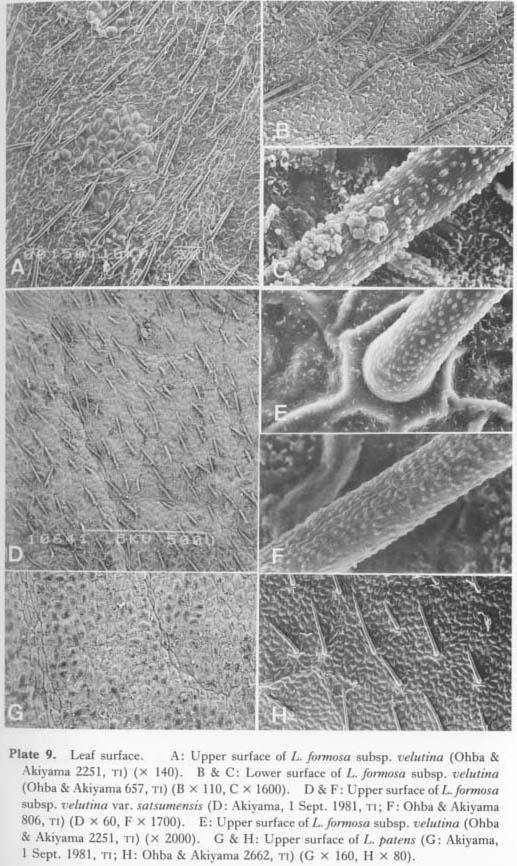Morphological Diversity and Variation
Hairs on Leaf Surfaces
|
Species of sect. Macrolespedeza have hairs on the leaf surfaces. The pubescence of leaves and the length and density of hairs on leaf surfaces have been used as key characters in this section. To examine hairs on leaf surfaces, leaves were taken from herbarium specimens or living plants, coated with platinum, and examined with a scanning electron microscope (Hitachi S-700). The hairs on both leaf surfaces are appressed and covered with pusticulate (wart-like) protuberances. Except for the length and density there is no difference between the hairs on the upper and those on the lower surfaces of leaves (Plates 7-9). In L. cyrfobotrya many minute callose appendices are observed on both surfaces of leaves (Plate 7C-E & G). L. patens has been distinguished from L. formosa subsp. velutina by the glabrous upper surface of leaves, or in some plants by the pubescent upper surface of leaves with long, sparse hairs. According to our observations, however, L. patens usually has glabrous leaves on the upper surface (Plate 9G), and those individuals with pubescent leaves on the upper surface are scarcely distinguishable from L. formosa in the length and density of hairs on the upper surface of leaves (Plate 9H). Moreover, the hairiness of the upper surface of leaves of L. formosa is variable, and some plants have glabrous leaves on the upper surface (Akiyama & Ohba, 1988). The hairiness of the upper surface of leaves is also variable in other species, such as L. bicolor, L. Buergeri, and L. Maximowica.ii. No taxonomical ranking, even as forma, can be based on this character. L. homoloba is characterized by its glabrous leaves on the upper surface except on and along the midrib, and by shorter hairs on the lower surface of leaves (Plate 8C & D).
|


